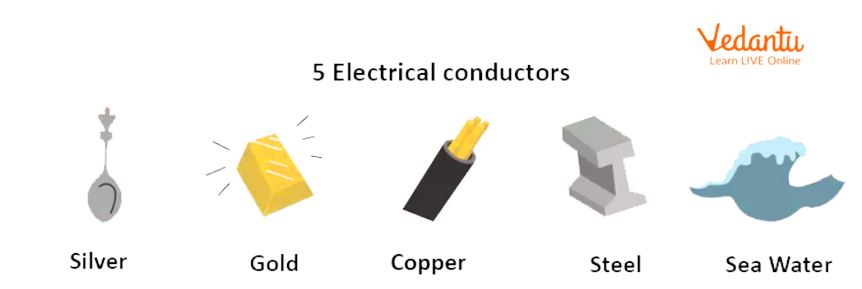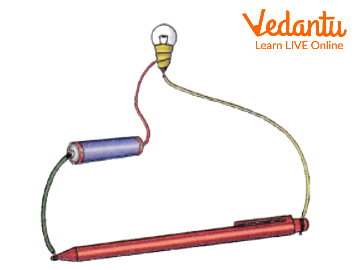




Conductors and Insulators: An Overview
We all know that our surroundings are made up of different types of materials such as iron, wood, plastic etc. All these materials have different structures, applications, and properties. The classification of these materials is done on the basis of various parameters like their quality, durability, nature etc. From these, one of the most significant and important parameters is conductivity.
Conductivity is defined as the ability of a material to allow the flow of current or electrons to pass through it. Different materials have different conductivities. Some materials have high conductivity such as metals like iron and copper while some materials have low conductivity such as wood, plastic, etc. The materials which allow the flow of electric current to pass through them are called conductors. The materials which do not allow the flow of electric current to pass through them are called insulators.
In this article, we are going to learn about the conductors and insulators, understand their properties, and how they differ from each other.

Electric Current
Conductors and Insulators
Conductors and insulators are the classification of materials on the basis of conductivity. Conductors are the materials which allow the flow of electric current and are used in electrical appliances whereas insulators are the materials which do not allow the flow of electric current and used in other products.
What is a Conductor?
The flow of electrons in a conductor is called the electric current. The force needed to make that current flow through the conductor is called voltage. Conductors are the device having a conduction greater than 103 s/cm. Basically, electrical properties of any material depend upon the electronic population within an atom as conductivity is the outcome of the motion of electrons among the energy bands.
When a charge is transferred to such a particle, it gets distributed across the complete surface of the particle or sample, which ends up in the movement of electrons in the object. The charges transferred to an electrical conductor distribute till the force of repulsion between electrons in areas of excess electrons is reduced to the minimum value. When such an object is brought in touch with another conductor, the charge gets transferred from the first conductor to the other until the repulsion because the charge is decreased. Some of the common conductors are metals, humans, animal bodies, and earth.

Examples of Conductors
What is an Insulator?
The materials which do not allow the electricity or the flow of electrons to pass through them easily are called insulators. If charge is transferred to a non-conductor or an insulator at a given location, the excess charge will remain at the initial location of charging. While insulators aren't useful for transferring charge, they do serve an important role in static experiments and demonstrations. Conductive objects are usually mounted on insulating objects. This arrangement of a conductor on top of an insulator prevents charge from being transferred from the conductive object to its surroundings.
In case of insulators, the conduction band is empty and there's a huge gap between the conduction band and valence band. It is around 9eV and therefore the conduction is less than 10-8 s/cm which suggests no conduction. They do not have electric charges or electrons that are free to move inside these materials as compared to others. Some of the common insulators are wood, steel, and plastic.

Examples of Insulators
Example of Conductor
As conductors have the ability to allow the flow of electric current to pass through them, they are used in all electronic devices and appliances. The most commonly and widely used conductors which are present in almost all devices include the following:
Copper
Aluminium
Mercury
Steel
Bronze
Graphite
Other conductors which are not commonly used but have strong conductive capacity are listed below:
Platinum
Brass
Silver
Gold
Example of Insulator
As insulators do not have the ability to allow the flow of electric current to pass through them, they are used in other daily products such as furniture, cloths, storage boxes etc. The most commonly and widely used insulators include the following:
Rubber
Glass
Wood
Cotton
Cloth
Plastic
Other insulators which are not commonly used but have strong inductive capacity are listed below:
Fibreglass
Paper
Porcelain
Ceramics
Quartz
Diamond
Difference Between Conductor and Insulator
Application of Conductor
Conductors are used in all electronic devices, equipment, and machines which work on electricity. Some daily use applications of conductors include the following:
Iron which contains metal plates.
Television, refrigerator contain different metals for conduction.
Machines which run on electricity are made of conductors.
Wires are made of conductors for the proper flow of electricity.
Application of Insulator
As insulators restrict the flow of electric current, they are used in devices where the flow of current needs to be controlled. Some of the applications of insulator include the following:
In an electric circuit to control high voltage current.
To protect equipment from electrical shocks.
To improve the performance of the devices.
Conductor Diagram
The easiest circuit diagram of a conductor is given below:
Circuit Diagram of a Conductor
In the above circuit diagram, the bulb glows because the key is a conductor as it is a metal and allows the flow of electric current to pass through it which ultimately glows the bulb.
Insulator Diagram
The easiest circuit diagram of an insulator is given below:

Circuit Diagram of an Insulator
In the above circuit diagram, the bulb does not glow because the pen is made up of plastic which is an insulator and does not allow the flow of electric current to pass through it.
Conclusion
Conductors are the devices which allow the flow of electric current to pass through them and insulators do not allow the flow of electric current to pass through them. Examples of conductors include copper, aluminium, and steel. Examples of insulators include wood, glass, and plastic.
FAQs on Conductors and Insulators
1. What are electrical conductors? Explain with examples.
Materials that allow electric current to flow freely through them are called conductors. This is because they possess a large number of free electrons that can move throughout the material. When a voltage is applied, these electrons drift in a specific direction, constituting an electric current. Common examples include metals like Copper, Aluminium, Silver, and Iron, as well as graphite, the human body, and the Earth.
2. What are electrical insulators? Explain with examples.
Materials that strongly resist or prevent the flow of electric current are called insulators. In these materials, electrons are tightly bound to their atoms and are not free to move. This lack of free charge carriers makes it very difficult for electricity to pass through them. Common examples include Wood, Plastic, Rubber, and Glass, as well as ceramics, porcelain, and pure water.
3. What is the main difference between a conductor and an insulator based on their electronic structure?
The primary difference lies in the energy band structure of their atoms.
- In conductors, the valence band (containing the outermost electrons) and the conduction band (the energy level for free movement) overlap. This allows electrons to move easily into the conduction band and become free charge carriers with very little energy input.
- In insulators, there is a large energy gap, often called the forbidden energy gap, between the valence and conduction bands. A significant amount of energy is required to move an electron across this gap, which is why they do not conduct electricity under normal conditions.
4. Why are metals good conductors of electricity?
Metals are excellent conductors because of their unique metallic bonding. The outermost electrons of metal atoms are delocalised, meaning they are not attached to any single atom. They form a 'sea' of free electrons that can move easily throughout the metallic lattice. When an electric field is applied, this sea of electrons drifts in a unified direction, creating a substantial electric current.
5. How do conductors and insulators behave differently when placed in an external electric field?
Their responses are fundamentally different. When a conductor is placed in an external electric field, its free charges (electrons) redistribute on the surface. This creates an internal electric field that exactly cancels the external field inside the conductor. Thus, the net electric field inside a conductor in electrostatic equilibrium is zero.
When an insulator (or dielectric) is placed in an external field, its bound charges cannot move freely. Instead, the molecules may stretch or re-orient in a phenomenon called polarisation. This creates a small internal electric field that opposes the external field but only reduces its strength, rather than cancelling it completely.
6. Is pure water a conductor or an insulator? What about tap water?
Pure water (demineralised or distilled) is an excellent insulator because it has very few free ions to carry charge. However, tap water, seawater, or rainwater are effective conductors. This is because they contain dissolved minerals and salts, such as sodium (Na+), calcium (Ca2+), and chloride (Cl-) ions. These dissolved ions act as mobile charge carriers, allowing electricity to flow through the liquid.
7. Can an insulator be forced to conduct electricity?
Yes, an insulator can be made to conduct electricity, but only under extreme conditions. If a very strong external electric field is applied across an insulator, it can be powerful enough to pull electrons away from their atoms, freeing them to conduct. This phenomenon is known as dielectric breakdown. When this occurs, the insulator is often permanently damaged, as seen when lightning passes through air (normally an insulator).
8. How do semiconductors fit into the classification of conductors and insulators?
Semiconductors, like silicon and germanium, have electrical properties that fall between those of conductors and insulators. Their energy gap between the valence and conduction bands is much smaller than in insulators but not zero like in conductors. This means at very low temperatures, they act as insulators. However, at room temperature or by adding impurities (a process called doping), enough electrons can gain the energy to cross the gap, allowing for a controlled flow of electricity.
9. What are some practical applications of conductors and insulators in daily life?
Conductors and insulators are used together in almost all electrical systems for functionality and safety.
- Conductors: Copper and aluminium wires are used for electrical wiring in homes and power lines to transport electricity efficiently. The metallic components inside appliances carry current to make them work.
- Insulators: The plastic or rubber coating on wires prevents electric shock and short circuits. The plastic casings of electronic devices, the ceramic discs on power poles, and the wooden handles of tools all serve as insulators to protect users.






















